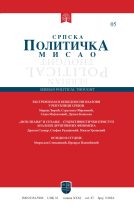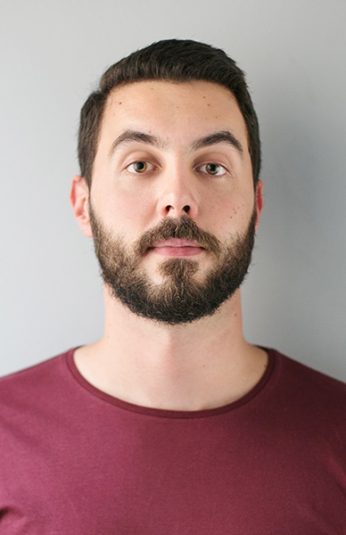- Home page
- Researchers
- МА Stefan Radojković
МА Stefan Radojković
Stefan Radojković (1984), Research Assistant, graduated from the Faculty of Philosophy, University of Belgrade, Department of History (2009). He continued his post-graduate studies at the Faculty of Political Sciences of the University of Belgrade, where he obtained a master's degree in political science for international affairs in 2014, defending his master's thesis "Protracted social conflicts - Kosovo and Metohija from 1980 to 2008". In the same year, in November, he enrolled in doctoral academic studies, program: International and European Studies at Faculty of Political Sciences.
By the decision of the Holy Synod of Bishops in 2017, he was appointed secretary of the Jasenovac Committee of Serbian Orthodox Church. As an expert associate of the Museum of Genocide Victims (MŽG) in Belgrade, since July 2018, he participated in the projects "Crimes on the Territory of the Former Yugoslavia in the 20th and 21st Century" and "Encyclopedia of Genocide in the Independent State of Croatia". For the period from October 2021 to June 2022, he has been working as Museum’s curator-historian.
Since February 2023, he has been employed at the Institute for Political Studies (IPS). He is also a long-time correspondent and commentator for newspaper magazines and electronic media such as "Pravoslavlje", "Jerusalem Post", "TV Hram", "Talas.rs", Radio "Svetigora", "Blic", "Religion in Praxis", "KoSSev " and "Nedeljnik".

GENESIS OF HOLOCAUST HISTORY POLITICS – CASE STUDY: REPUBLIC OF SERBIA 1945-2020
The ways of preserving and transferring the memory of the Holocaust committed in Yugoslavia in general, and especially within the German military-occupation zone “Serbia”, have been the subject of analysis by numerous research projects. Most of the mentioned projects studied the period from the end of Second World War, until the first decade of the XXI century, while a negligible number of scholars attempted to theoretically frame the researched phenomenon. For this reason, the article tries to, through the analysis of the Holocaust history politics practiced by the Republic of Serbia during the period from 1945 to 2020, update the previous research on this topic as well as point out the stages in the mentioned politics genesis in order to conceptually frame them and offer for them preliminary explanations. Looking at the Holocaust history politics of the Republic of Serbia, i.e. its institutional practices, through the theoretical framework of memory studies, the research findings are based on the content analysis of documents published by prominent institutional actors during the aforementioned period. In particular, the documents and publications of the Federal Association of Fighters of the National Liberation War (SUBNOR), the Museum of Genocide Victims and the “Staro Sajmište” Memorial Center are analyzed, as well as documents from other relevant bodies and state institutions. Based on the available documents analysis and a review of scientific literature, the paper advocates the thesis of the existence of three phases within the Serbia’s Holocaust history politics genesis, which are characterized by special tendencies (conditioned by social frameworks) when it comes to preserving and transferring the memory of the genocide committed against the Jewish communities of the German military-occupation zone “Serbia”. The first phase represents the period 1945-1991 when the abstraction and leveling of the Holocaust victims is the norm. The second phase covers the period 1991-2011, during which the explicit naming of Holocaust victims occurs, but also their intertwining with Serbian and Roma victims. During the third phase (2011-2020), the explicit naming of the Jewish victims of the Holocaust as well as the Roma victims of Samudaripen persists, on the one hand, while at the same time striving for their (institutional) separation from the victims of the genocide committed against the Serbian people. The political landscape has significantly influenced how this history is remembered and commemorated, often reflecting broader regional and global contexts as well as their respective narratives about the Holocaust.

